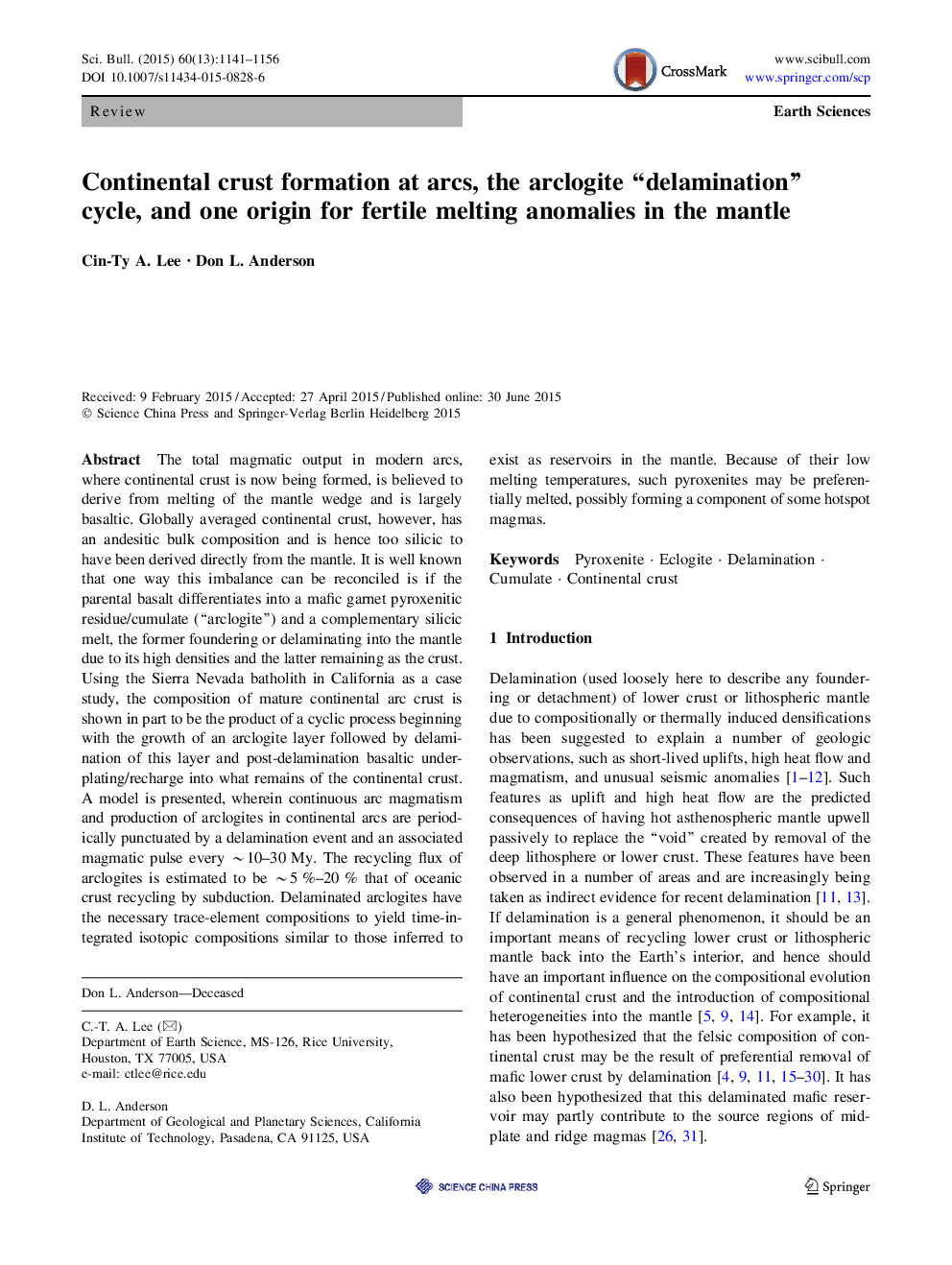| کد مقاله | کد نشریه | سال انتشار | مقاله انگلیسی | نسخه تمام متن |
|---|---|---|---|---|
| 5789204 | 1414302 | 2015 | 16 صفحه PDF | دانلود رایگان |

The total magmatic output in modern arcs, where continental crust is now being formed, is believed to derive from melting of the mantle wedge and is largely basaltic. Globally averaged continental crust, however, has an andesitic bulk composition and is hence too silicic to have been derived directly from the mantle. It is well known that one way this imbalance can be reconciled is if the parental basalt differentiates into a mafic garnet pyroxenitic residue/cumulate (“arclogite”) and a complementary silicic melt, the former foundering or delaminating into the mantle due to its high densities and the latter remaining as the crust. Using the Sierra Nevada batholith in California as a case study, the composition of mature continental arc crust is shown in part to be the product of a cyclic process beginning with the growth of an arclogite layer followed by delamination of this layer and post-delamination basaltic underplating/recharge into what remains of the continental crust. A model is presented, wherein continuous arc magmatism and production of arclogites in continental arcs are periodically punctuated by a delamination event and an associated magmatic pulse every ~10-30Â My. The recycling flux of arclogites is estimated to be ~5%-20% that of oceanic crust recycling by subduction. Delaminated arclogites have the necessary trace-element compositions to yield time-integrated isotopic compositions similar to those inferred to exist as reservoirs in the mantle. Because of their low melting temperatures, such pyroxenites may be preferentially melted, possibly forming a component of some hotspot magmas.
Journal: Science Bulletin - Volume 60, Issue 13, July 2015, Pages 1141-1156